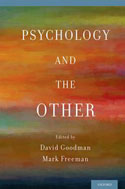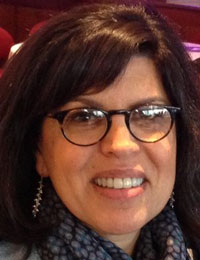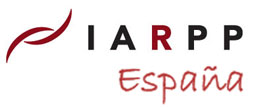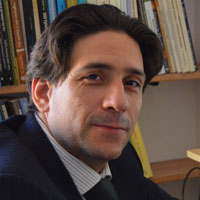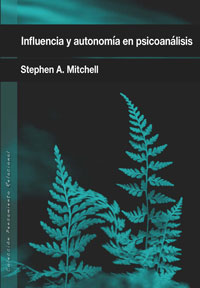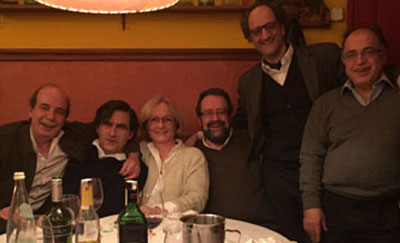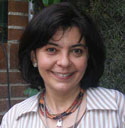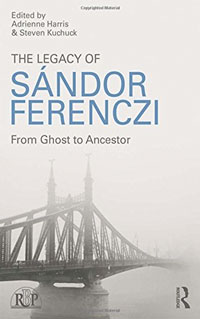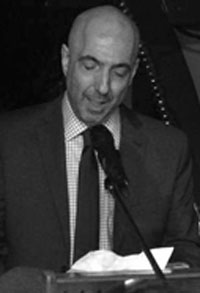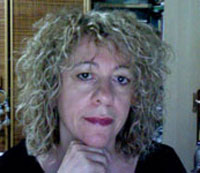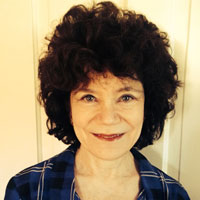Interviewed by Joye Weisel-Barth (USA)
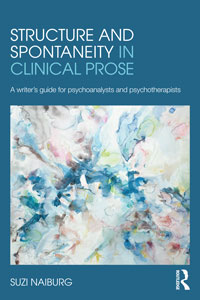 Joye Weisel-Barth: We’re here to talk about your wonderful book Structure and Spontaneity in Clinical Prose: A Writer’s Guide for Psychoanalysts and Psychotherapists (Routledge, 2015). What comes through is your love and appreciation of literature. So let’s start with some background. I’m curious about your history with books and words. Where did all of this come from?
Joye Weisel-Barth: We’re here to talk about your wonderful book Structure and Spontaneity in Clinical Prose: A Writer’s Guide for Psychoanalysts and Psychotherapists (Routledge, 2015). What comes through is your love and appreciation of literature. So let’s start with some background. I’m curious about your history with books and words. Where did all of this come from?
Suzi Naiburg: I’m not really sure. I have fond memories of children’s books that were read to me before I could read, but I remember more about being on the playground in elementary school than anything else. I wasn’t an early reader or even an avid reader in grade school. Then something shifted. I don’t know exactly when. I never gave up my love of sports, but I also began to love books. I had wonderful teachers in high school. My senior-year English teacher, Kay Rasco, was one of the best teachers I ever had.
It’s interesting what teachers can bring to us.
Absolutely.
Do you remember any of the things you learned from Kay?
She ran her class as a seminar: she asked great questions, questions that opened up discussion. We did a lot of writing. It was a wonderful group. But it was how she paid attention to literature that just kept opening it up. I think with a good teacher, that’s what happens.
The idea of things opening and opening when we’re reading stories as children is not always apparent. And a good teacher can illuminate how much is latent in writing.
Exactly, and good readers, like teachers, extend the meaning of those texts as they read. I’d like to tell you about a wonderful bit of advice Joe Pisacane gave me. He was the chef owner of The Periscope in Santa Fe many years ago. When he came out of the kitchen to mingle with his guests, I asked him “What is the best preparation for becoming a chef?” He said, “eating well.” So the idea of bringing good writing to the attention of writers and reading well—closely and deeply—with an eye to how writing works is, for me, an essential part of teaching writing and part of the fun.
I know a lot of colleagues have had that experience. I know their excitement when they take your course; words open up for them.
Thank you.
So Suzi, how did you decide to write this book?
I had been teaching writing and coaching writers for years and realized I didn’t want to keep teaching the same thing. So I thought if I could write a book and refer writers to it, I would be freer to develop new approaches. I also realized something in retrospect. Having my ideas available in my book opens up space in each workshop. I don’t feel as rushed when I’m teaching.
Your book contains many touchstones for writers: important and concrete ways to think about how “we construct worlds out of language.” For example, you present five different modes of clinical prose, as you describe them: “The paradigmatic mode abstracts ideas from experience to build concepts and theories. The narrative mode organizes experience through time, creating meaningful relationships between causes and effects. Lyric narratives present events unfolding in an uncertain present. The evocative mode works by invitation and suggestion, and the enactive mode creates an experience to be lived as well as thought.” . . . After such a long committed process of writing your book, does it feel like it was worth it?
It does, but I have to tell you I had no idea how much time or what kind of commitment it would take. I couldn’t have known. For example, I began writing about four modes of clinical prose and in the process conceptualized a fifth, the lyric narrative mode. For me writing my book was also a process of exploration and discovery. I’d gather material together that I hadn’t read and wanted to read and put it in files organized by chapters. So I had this treasure trove each time I started a new chapter that allowed me to grow and grow my book rather than just write it. That experience alone was worth it.
Did you learn new things about yourself in the process? Do you think you’ve changed in this process of writing?
Absolutely. As a writer and analyst, I know how important it is to trust the creative and analytic process even when you don’t know where it’s going and let experience grow. Working on my book over a number of years, I lived these lessons in ways I hadn’t before. I also discovered my own creativity as a literary critic, or perhaps it’s more accurate to say I acknowledged my creativity as a critic. I’m not sure that would have happened if I hadn’t given myself the chance to explore writing in such depth and in my own way. When I was studying literature in college, I felt this divide between creative writers and those of us who studied them. I felt they were creative, and I was the toiler explicating their work.
Do I understand that.
Do you?
When I was at Yale in graduate school, I took a creative writing class with Robert Penn Warren. By the time I got to graduate school in English, it was so boring to me. As an undergraduate, it was all new and exciting. Then when I got to Yale, it was like a sweat shop. And I could hardly bear it, and I took this creative writing class, and it was an entire transformation. It was mostly what I did in my program because I loved it so much.
One of the things that probably makes you a good writer is that you have a sense of what good literature is.
It was such an incredibly different experience than reading other people’s literature and looking at their creativity, which after a while was sort of depressing. (We both laugh.)
I don’t think I reached that point, luckily, because I admired so many writers and literary critics and what they did. I was impressed by how the critics could see so much going on in a literary work just as an analyst can appreciate so many levels of meaning in analytic process.
I have to say that was just a phase for me, because when I come across a good writer, I’m thrilled. It makes me so happy.
Yes, it’s delicious. I know what you mean. But for me now, there’s less of a divide between creative writers and creative criticism. One of the things my book taught me was that as a literary critic and a writing teacher, I have my own creativity.
It totally comes through. . . .You present these five different modes of written expression and also the interweaves between them. Do you have a favorite mode?
No, no, I don’t. They all do different things. And they often don’t appear on their own. You may see the evocative and enactive working together, in a lyric narrative, for example. But the aesthetic of each mode has a certain raison d’être and its own way of organizing or employing words to convey experience and create an experience for readers. When you recognize the aesthetic of each mode, you can see it operating on its own and in combinations.
I love the evocative mode.
Me too.
I think that’s my favorite. I guess that says something about who I am. You have a very balanced intelligence—at least, that’s my experience of you, so I understand that what’s fun for you is to identify the modes but also see how the interweaves between them make for good writing.
Exactly. For example, I love the section I call “moving matters” in the chapter on the paradigmatic. The writers I quote write evocatively about ideas. Ideas are the currency, the main agents of action in the paradigmatic mode. But their writing isn’t dry. When you understand the modes, you can see how they operate together. It’s not just this or that, it’s this and that. A writer can infuse one into another as you see in paradigmatic writing that is evocative.
Again the world opens in much more complex and nuanced ways. Here’s a question: Do you think there’s a mode that would particularly benefit our analytic writing? (We both laugh.)
I’d like to see more exciting writing, more creative writing but also good paradigmatic writing. It’s not that I want to take out one mode and replace it with another. I don’t want to sideline the paradigmatic just because it’s the most frequently used mode in our clinical papers. As Henry James said, “Give each writer his [or her] due.” That’s what I’d like to facilitate: to help each writer work in more effective, compelling, and creative ways in the modes they choose to use. So what I think would benefit our field is that people invest more time in becoming better writers. All the modes I name (and others still to be named) contribute to our field. Yes, I think the modes that are less frequently represented in our literature could bring more vitality to it. The lyric narrative is a perfect example, because it’s a narrative that doesn’t structure itself on retrospective knowledge as other narratives do. It situates readers in the present moment as the analysis unfolds with all its uncertainties and confusions. It brings readers into an experience that’s closer to what happens moment to moment. That’s an example of writing that reflects more of what we actually experience, and it creates that kind of authenticity for readers and draws them in the way the analyst writer was drawn in.
You’ve spent many years teaching, writing, and working with many different students. On the basis of your experience, to what extent can writing be taught? To what extent is literary talent inborn?
Writers come to my workshops and change. They get excited and discover that it’s not that they can’t write; it’s that they’ve never been taught to write. I hope that’s also what they discover when they read my book and do the exercises I’ve included. Going back to Joe’s comment, reading well ignites and opens up possibilities for writing well. What’s so rewarding to me is to see writers change in the process of going through a workshop or working with me one on one.
So you’ve witnessed it.
You bet.
Your book is now out in the world. What hopes do you have for its reception and uses?
Oh, I have grand hopes and wonderful fantasies! One of my dreams is that my book will generate new kinds of conversations among writers and between journal editors, peer reviewers, and writers. I’d love to see a greater appreciation of the different modes of clinical prose and see this new vocabulary and conceptual understanding of clinical writing shared so that writers don’t have to make themselves into other kinds of writers but are helped to be the best kind of writer they can be using the forms of expression they choose to use.
This is such a central part of any contribution, isn’t it? I think about naming new ideas and how important it is in our own analytic field. Important writers create their own vocabularies, and if their writing is important, those vocabularies become useful for others. And this is your wish. They’ll learn a new vocabulary, and this will give them new tools for writing.
They are the playground structures that allow for greater spontaneity and variety in approaching writing. And I hope in the process, my book gets people excited about reading and writing. And that more people want to join my writing groups on Skype and locally. And on and on my dreams go, but I don’t want to sound too, I guess, evangelical.
It’s actually lovely to hear someone so excited about what they’ve done and the possibilities for what they’ve done. Please be evangelical.
I’ll let you be evangelical for me, and you have been. Thank you. And it’s been wonderful to get emails from friends all over who have gotten my book or given it to others or want to use it in a writing course for candidates. I’m delighted that my book is beginning to have a life of its own in many places.
What more can we hope for our babies than that they go out in the world and create new possibilities for people? So this is a sort of generative wish.
You bet.
People in our field, the next generation.
Suzi: All this writing about our clinical work feeds us as clinicians and feeds our clinical work. By writing we can make discoveries about our patients, our work, and ourselves.
Joye: I’m sure you’ve had the experience, I have, that when I sit down and write about a patient or clinical process, things come alive in new ways and new ideas emerge that weren’t there before.
Absolutely. What a wonderful interview with a kindred spirit! Thank you very much.
This conversation has been fun and also an honor, Suzi. Your book is a gift to me personally and a contribution to our field—so many new ways of thinking about words and how we fashion them into ideas and experience. Thank you so much back. I also hope our conversation prompts our readers to run out to purchase the book or to buy it with one click.
Link: http://goo.gl/kM4wu7
Enter code IRK71 (before Dec. 31, 2015) for a 20% discount when you order online from Routledge.
 Suzi Naiburg, PhD, LICSW, is a graduate and faculty member of the Massachusetts Institute for Psychoanalysis in private practice in Belmont, Massachusetts. She is also a writing coach, teacher, and editor who taught expository writing at Harvard and more than sixty clinical writing workshops. You can find her full teaching schedule and excerpts from her book at www.SuziNaiburg.com.
Suzi Naiburg, PhD, LICSW, is a graduate and faculty member of the Massachusetts Institute for Psychoanalysis in private practice in Belmont, Massachusetts. She is also a writing coach, teacher, and editor who taught expository writing at Harvard and more than sixty clinical writing workshops. You can find her full teaching schedule and excerpts from her book at www.SuziNaiburg.com.
Suzi Naiburg, PhD, LICSW
149 Pine Street
Belmont, MA 02478-2733
Email Suzi Naiburg
website: http://www.suzinaiburg.com
 Joye Weisel-Barth is psychoanalyst at the Institute of Contemporary Psychoanalysis in Los Angeles, as well as a senior instructor, training analyst, and supervisor. She teaches courses on Freud, Interpersonal Psychoanalysis, Neuroscience, Attachment Theory, and Varieties of Relational Psychoanalysis. In addition to writing about analytic issues and clinical experience, Weisel-Barth is book review editor for the International Journal of Psychoanalytic Self Psychology, an associate editor of Psychoanalytic Dialogues, and a council member of the International Association of Psychoanalytic Self Psychology. Her analytic practice is in Encino, California. And she loves dogs.
Joye Weisel-Barth is psychoanalyst at the Institute of Contemporary Psychoanalysis in Los Angeles, as well as a senior instructor, training analyst, and supervisor. She teaches courses on Freud, Interpersonal Psychoanalysis, Neuroscience, Attachment Theory, and Varieties of Relational Psychoanalysis. In addition to writing about analytic issues and clinical experience, Weisel-Barth is book review editor for the International Journal of Psychoanalytic Self Psychology, an associate editor of Psychoanalytic Dialogues, and a council member of the International Association of Psychoanalytic Self Psychology. Her analytic practice is in Encino, California. And she loves dogs.
Joye Weisel-Barth, PhD, PsyD
4826 Andasol Ave.
Encino, CA 91316
Email Joye Weisel-Barth
 Stuart A. Pizer, PhD, ABPP
Stuart A. Pizer, PhD, ABPP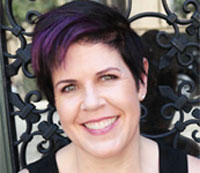 Christina Emanuel, MFT, PsyD
Christina Emanuel, MFT, PsyD Ruth M. Lijtmaer, PhD, is a senior supervisor, training analyst, and faculty member at the Center for Psychotherapy and Psychoanalysis of New Jersey and is in private practice in Ridgewood, NJ. She frequently presents lectures and papers at both national and international levels. She is the author of several scholarly publications and book chapters concerning multicultural and religious issues, trauma, social trauma, transference-countertransference and psychoanalytic psychotherapy.
Ruth M. Lijtmaer, PhD, is a senior supervisor, training analyst, and faculty member at the Center for Psychotherapy and Psychoanalysis of New Jersey and is in private practice in Ridgewood, NJ. She frequently presents lectures and papers at both national and international levels. She is the author of several scholarly publications and book chapters concerning multicultural and religious issues, trauma, social trauma, transference-countertransference and psychoanalytic psychotherapy.![]()

